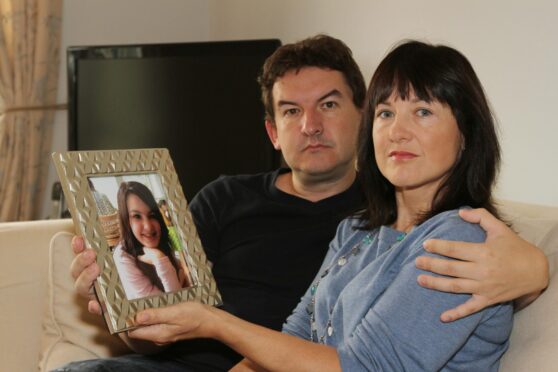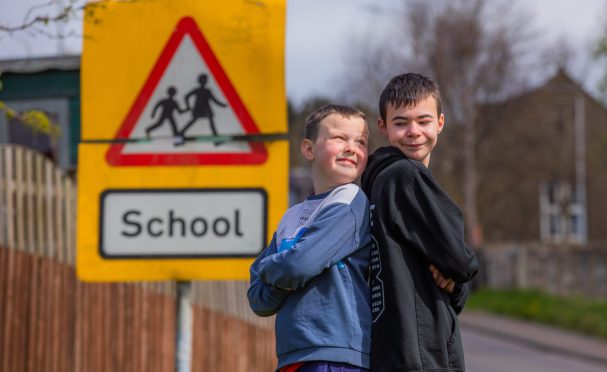Children and young people can become school refusers for a variety of reasons.
And parents whose son or daughter won’t go to school can feel powerless and extremely worried – and not just about their education.
Should they force them to go? What’s making them so reluctant? Could they be fined or even jailed if their child is persistently absent?
To answer some of these questions, we’ve looked at the law around absenteeism and set out some advice from mental health charity YoungMinds.
School avoidance law: what happens if my child refuses to go to school?
Can you be prosecuted if your child persistently refuses to go to school?
Techically, yes, but it’s extremely rare for this to happen. It’s also unlikely children would be taken into care unless there were other concerns about their wellbeing.
According to the Education (Scotland) Act 1980 parents are responsible for ensuring their child gets an education until they are 16.
Where a child has regular unauthorised absences, parents could be guilty of an offence and fined or even imprisoned.
More in our school refusers series:
- Dundee teenagers reveal why they won’t – or can’t – go to class
- Autistic Fife teenager Alannah missed her entire final year
- Fife counsellor says bullying and violence can make children too scared to go to school
- Angus parent reveals anguish of daughter too anxious for school
- The Dundee teachers helping teenagers so anxious they are housebound
Councils can make an attendance order, a referral to the Children’s Reporter or ultimately seek court action.
But well before this stage is reached local authorities and schools will work with parents to improve attendance or find another solution.
How to help a child with anxiety about school
Anxiety, bullying, family issues and additional support needs such as ADHD or autism can all be triggers for children and young people refusing to go to school.
The first step, according to YoungMinds, is talking to your child and trying to establish the cause of their anxiety.
Once you know why your child is refusing school it recommends these steps for working with their school:
- Ask for a meeting with their class teacher or another staff member concerned with their wellbeing
- Make notes of what you want to say beforehand, and during the meeting go through the specific things your child is finding difficult.
- Ask for any specific changes you and your child think may help and what changes the school can offer.
- Take notes during the meeting, agree what changes will be made and follow up afterwards by email.
- Arrange a date to check back to see if things have improved.
- If the person you’re dealing with isn’t helping escalate the matter to a senior member of staff within the school or council education service.
To help at home Young Minds recommends:
- Create a morning routine or timetable for getting ready and focusing on one thing at a time rather than the big goal of ‘getting to school’.
- Think about ways of managing their anxiety. Young children might want to bring a favourite toy, or a teenager could fill a box with things them help them feel calm.
- Encourage them to do things that help them relax, such as being with friends, listening to music, playing sport or doing a hobby.
- Recognise the small achievements, such as getting up on time or handing in schoolwork.
- Take pressure off. If they can’t do homework one day you can try again the next.
School refusal: what can schools do?
There are many simple changes schools make to help when different situations are challenging. These include:
- Have pupils arrive 10 minutes early to do a job, such as setting up the classroom
- Provide a safe space such as a wellbeing room to retreat to
- Provide visual timetables also showing registration and break times
- ‘Now’, ‘next’ and ‘then’ cards to break the day down into smaller steps
- Linking with a peer buddy or staff mentor for regular check-in
- An ‘exit card’ to leave a lesson if they’re too anxious
- Flexible or reduced timetables
- Activities or clubs at break and lunchtime
But in some cases, more intensive support is required.
Roxane Caplan, head of services at YoungMinds, said: “If you think your child needs professional support, speaking to their GP and school, and considering whether counselling or therapy might help, are good places to start.
“It’s also a good idea to research other services, like local charities, that can provide help while you might be waiting for a referral.
“There is a guide on the YoungMinds’ website on how to go about accessing services, including how to talk to your GP about what your child is going through.
“Finding your way around different services and getting the right help can be really tiring at times. Make sure you look after yourself too. YoungMinds have a dedicated parents helpline which you can contact for free advice via phone, email or webchat.”
Further help is available from:
YoungMinds parent helpline on 0808 802 5544 or webchat
ParentLine Scotland on 0808 800 2222 or webchat
ChildLine on 0800 1111 or online
Parentzone website
Scottish Child Law Centre by email













Conversation